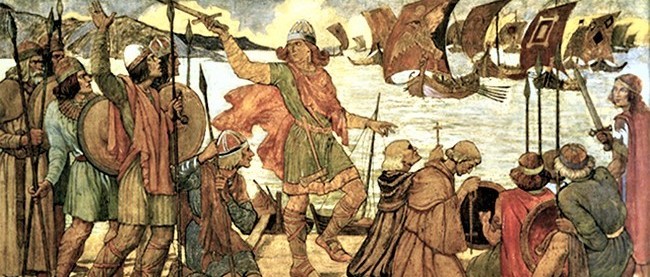Viking Clothing
Posted on 28th December 2020
Items worn were made out of linen and wool, spun and woven into clothing by the women of the household; animal skin was also used in the making of clothing.
Linen was used to make clothes for summer, the same items were then woven in wool for winter, as winters were harsh in Scandinavia.
The clothing was dyed using vegetable and mineral dyes and was often highly embroidered.
Men - A long shirt or tunic was worn that was tied at the waist by a leather belt which was then used to hang any personal possessions from the waist that they needed to carry with them. They also wore full-length trousers.
A woollen cloak was worn that was fastened at the shoulder by a brooch. When away from the farm, this cloak also served as a blanket.
If the Viking was wealthy, he wore a mantle instead of a cloak. This was similar to a cloak but often had fur trim across the shoulders and was heavily embroidered, which showed the man’s wealth and status within the community.
Women - A full-length dress, tied at the waist was worn. This was held up by a brooch on both shoulders. Over this, they wore either an apron or a long tunic (overdress). Woollen leggings or stocking were also worn.
Viking women always wore a head covering, either a hood or scarf.
In winter both men and women wore woollen or leather hats.
Shoes - Made of soft leather, often with fur trim. Goatskin was commonly used to make shoes. Leather straps were used on boots and shoes. Sometimes these were secured with buckles made of bone.
Men also wore long leather boots. Wealthy Vikings lined their boots with fur.
Tagged as: Junior The Vikings
Share this post:





